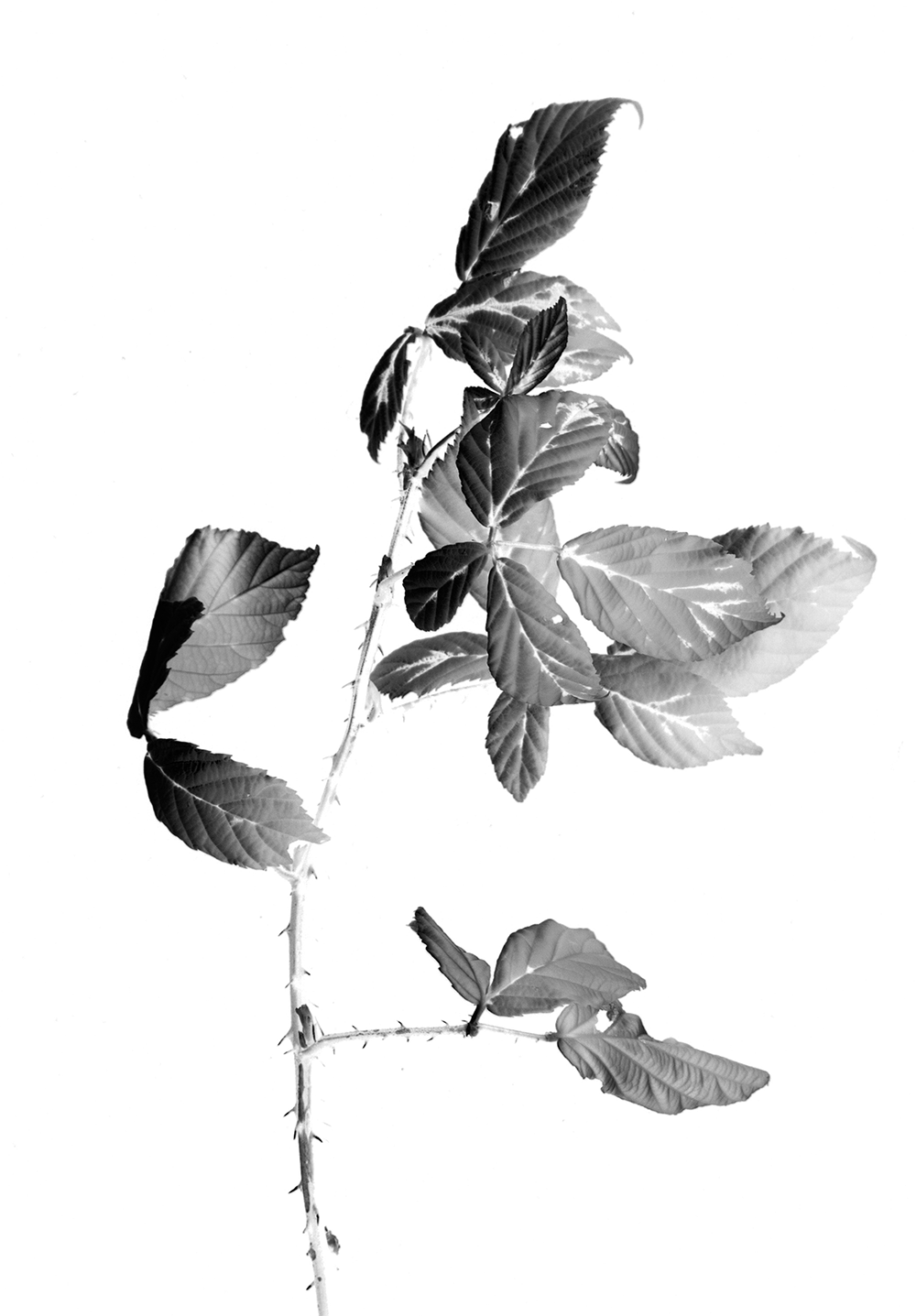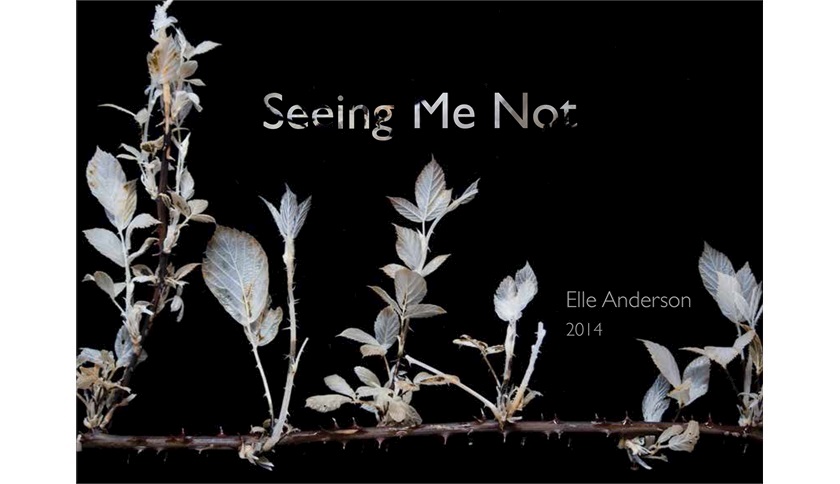“This business of seeing is a strange phenomenon. Most of us feel, that the higher up we climb the more we can see. As the world becomes a map spread out before us we think we see it all, a fast panorama we can grasp at a glance and examine at our leisure. But men who are used to looking at nature know that often the part may tell the story more truthfully than the whole.” from Edward Weston The photographer (1)
“Art is not what you see, but what you make others see”. Edgar Degas - French Impressionist painter (2)
Examining our relationship with plants has been a central focus in my final Masters work. In particular, I have considered our uneasy connection to certain species and our (often arbitrary) definition of 'weeds'. The evolution of my work over the past two years, as I have explored themes of perception, value and decay, provide a context for my final show.
Using processes involving deconstruction, preservation and anamorphism, I have considered this human-plant relationship through an uneasy duality; my own sense of guardianship for these unloved plants and a desire to present them in a different light.
From a distance my work looks easily accessible – an array of plant-life specimens in jars, on glass, or presented as images; easily recognisable botanical representations.
But on closer inspection, they can catch the viewer off-guard. They are not the portraits they might first appear. In fact, they attempt to disrupt the viewer’s expectations of botanical imagery.
More traditional botanical art-forms focus on accuracy to represent the beauty of the natural world. However my work often steps beyond traditional ideas of natural beauty, and at times it even manipulates the documenting of detail to subvert expectations of accuracy; an anticipated scientific perspective. To engage the viewer, my work should pose questions. Is this botanical art, or have I walked into a science lab? What am I looking at and how should I be viewing this? Are these plants wanted or unwanted, intentional or invasive; heroes or villains? It is this juxtaposition, and the uncertainty it can create, that informs my current work.
Drawing on Flusser's ideas of the artist as 'functionary', I have engaged directly with the natural world; choosing botanical subjects from my immediate environment. A leaf, a seed or a plant, a subject that may seem commonplace, is then reinterpreted. It is this potentiality, particularly within the overlooked and ignored, that pushes my work beyond the immediate and drives my practice. This has led to many of my works having a more specific focus. The 'weed' has become the central subject; plants that are often unloved and devalued, seen but overlooked.
My Master's work is inspired by a number of previous artists who have explored similar subjects and themes. Karl Blossfeldt gathered specimens, mostly along country tracks or railway embankments, or similar proletarian places, and his focus was often plants that were defined as weed species.(3) His photographic images could be described as plant portraits, images of parts of plants, sometimes enlarged, arranged in the middle of the frame.
A similar representational approach is often a starting point within my own practice. Plants are evenly lit and the subjects appear to be presented without manipulation. Removing plants from their natural environment and placing them singly in the frame of the camera removes any distraction: it isolates each plant from its context and frees the viewer from forced associations. It privileges my plant subjects as unique while borrowing elements from both minimalism and portraiture. It is this 'befriending' (4) of weeds, singling them out from their often neglected environment, that I hope creates a tension in my work re-encoding something ordinary into something extra-ordinary.
In my more photographically derived work, it is through anamorphosis that I attempt to deny the viewer an easy and straightforward narrative. My work contains intentional untruths, distortions both obvious and half-hidden. Sometimes my un-truth’s are told directly in front of the lens, in much the same way as Fontcuberta’s Herbarium series. However, while Fontcuberta presents the viewer with a series of pseudo-botanical images with attached Latin nomenclature to discourage closer examination of the compiled specimens (5), my manipulations are designed to quickly become evident to the viewer, changing or distorting their reading of the work.
Stephen Colbert defines the human tendency to attribute realism to a photographic image as 'truthiness' - “what you want the facts to be, as opposed to what the facts are’.(6).
In my Cabinet of Curiosities series, I used distortion and reflection to create 'new' botanical forms from old ones; a process that played with Colbert's 'truthiness' as a starting point.
Many of my current works also draw on this human predisposition - the images appear to be real, credible botanical representations at first glance, but closer observation should lead the viewer to question this. While the plants used as subjects are real, through my use of anamorphism, they appear to become something else.
This can create a wonderful conundrum for the viewer; deciding whether the work is reinforcing existing knowledge or mis-informing? Encountering this work in a gallery setting might accentuate this shifting perspective between perceived representations aligned with ‘science’ or ‘art’.
And just as our connection with plant species can be uneasy or unclear, I believe my Masters work can not be easily classified. It is clearly not straightforward botanical illustration, nor does it directly follow the conventions of photography. However, my work does recognize and use elements from both of these forms. But it is where these overlap (content that suggests recognition, composition that enables form, close up detail and framing that suggests portraiture) that has provided the richest ground for enquiry. Other tropes such as notational uses, linked imagery, and preservation of scale, I have ignored. Any 'truths' or expectations in the reading of the images are bought by the viewer, but, I hope, informed by my selective process. In this sense, my work is clearly authorial; I am a narrator (perhaps a co-narrator), building and encoding images through processes of selection and rejection, of presentation and representation. These works may be read in a direct way, much like a photogram, or alternatively, as a signifier of a world that surrounds us but with which we often have an uneasy relationship.
Joyce Campbell is another artist whose work has informed my practice. Many of her ambrotypes in LA Botanicals are of 'humble backyard blooms' (7) that offer a similar binary of interpretive possibilities. Campbell's ghostly images speak of a trace left; a fleeting meeting between immigrant, gardener and artist - echoes recreated through her ephemeral reproductions on glass. Similarly, in my work there is often an uneasy, even awkward relationship between viewer and subject; a tension that reflects the weed's own struggle for survival. These are plants that can be perceived (often depending on geography, history or cultural attitudes) as a boon or a pest, hero or villain.
In my Masters show, Seeing-Me-Not, I have further explored the idea of our uneasy relationship with the natural world through another binary; by walking a fine line between wholesome and unwholesome, between perceptions of caring and unkindness. The overriding ethos of my earlier practice has been environmental protectionism and my works have often been contextualised through my own paradigm of 'a lover of plants', an avid gardener who grows my own food and an artist expressing a concern for the environment. But the works in Seeing-Me-Not, include specimens that have been bleached or enlarged or desiccated, processes that could either be seen as preservative or morbidly torturous.
In embracing these macabre elements, these works attempt to reference the almost parasitic relationship humans have come to have with some plant species; without us they might not survive at all. It is through our actions of clearing, cultivation and disruption of earth that environments are created where these plants can thrive. In our own spaces, our gardens, a judgment can take place. A non-acceptance of plants we define as ‘weeds’. However, in another duality, we often have a more blasé attitude about these same plants once we look beyond our own boundaries. In a different environment we might not even ‘see’ them. There is a love-hate relationship at play here, a seeing and not seeing. In Richard Mabey’s words,
“We habitually think of weeds as invaders, but in a precise sense they are also part of the heritage or legacy of a place, an ancestral presence, a time-biding genetic bank over which buildings and tinkerings are just an ephemeral carapace.” (8)
Process and presentation both serve to highlight this dichotomy. For both my glass-vessel works (title?) and my photographic imagery (titles?) my process starts with the selection of objects. The act of cleaning these specimens removes any last physical references to their originating location. But I go further in eliminating each subject's individuality by placing them in a bleach bath to die slowly, preserving their form while removing their colour, their energy. As art works, they are presented in the form of colourless specimens in vessels or appear as de-saturated photographs.
While these works clearly reference certain scientific methodologies, they also hint at unethical, even ghoulish attitudes. Each bleached plant becomes a ghost of what it once was. The process of removing the plant's energy and colour by breaking down it's chlorophyll with bleach has almost sadistic nuances - a blurring of ethical boundaries. The final images we are left with pose questions of how we perceive the natural world and how real or 'un-filtered' our contact with the plant world really is. By removing colour and context, can we better observe the structure of the natural world? Or are we simply seeking to control and simplify - to add another shelf to our cabinet-of-curiosities?
My practice is driven by both content and process; plants and trace making are evident in all my work to date. But it is the duality of ‘seeing’ and ‘not seeing’ that has provided a particular focus for my Masters work; our interpretations of function and form and the 'values' we may apply to the opportunistic plants that are my subjects. My love of plants and my own relationship with my subjects might well be questioned by the viewer. And in turn, the viewer might consider their own connection with the natural world. But as an artist, the ultimate goal of my parctice is to open up a conversation about our connection with plants. As humans continue to reduce and destroy plant environments, perhaps we need a new perspective on our 'weeds': they may be holding the bruised parts of the world together (9), the parts we often don’t consciously see, the spaces we have made otherwise barren.
“For though we may be the earth’s gardeners, WE are also its weeds. And we won’t get anywhere until we come to terms with this crucial ambiguity about our role - that we are at once the problem and the only possible solution to the problem”. (10)
Elle Anderson
(with editorial assistance by Brendan Weir, MCW).


